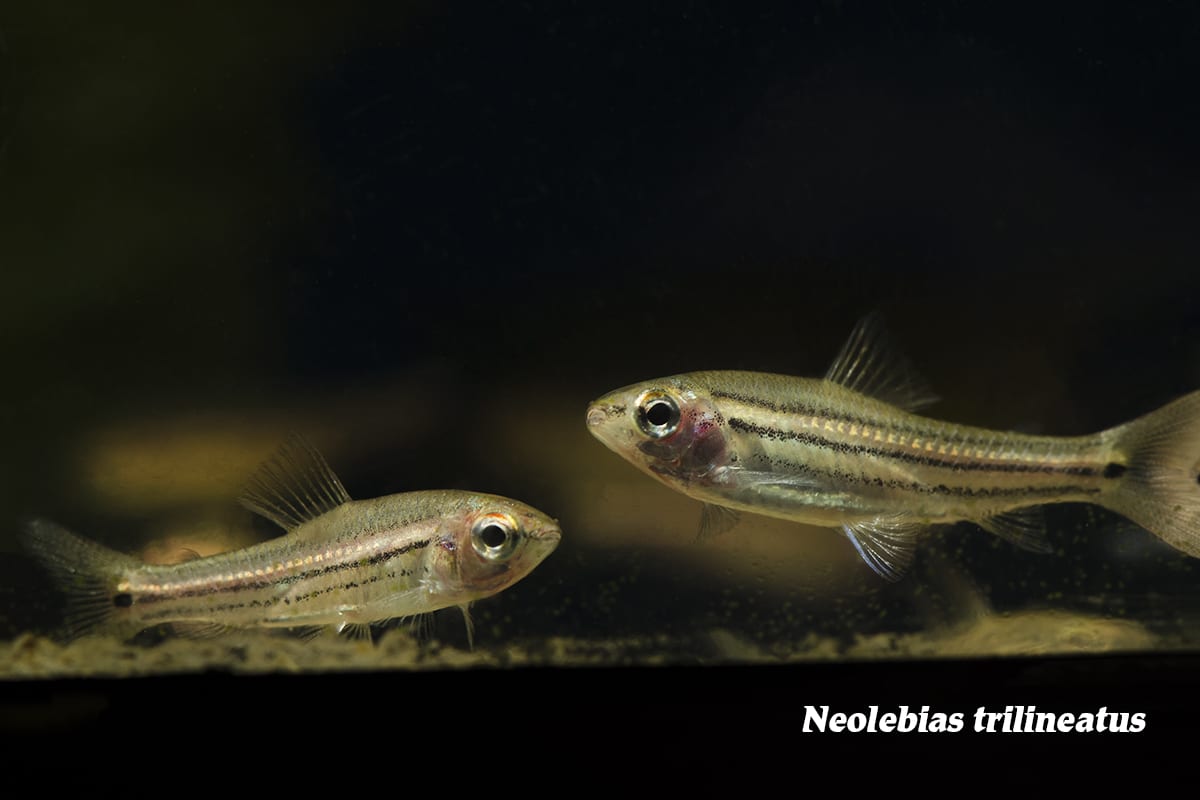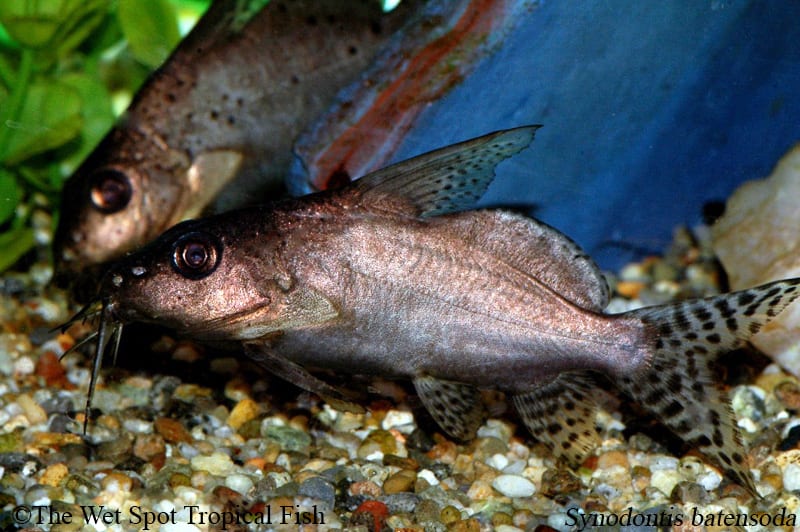New Year, New Fish
New Year, New Fish
Did you know the concept of a New Year’s Resolution dates all the way back to the Romans? At the start of a new year they made promises to the god Janus…maybe you’ve heard of him…he’s the one January was named for. In keeping with the tradition, we at The Wet Spot resolve to offer our devoted customers new, beautiful, and exciting fish as often as possible! So, in starting 2019 with our best foot forward, we bring you: Phenacogrammus sp. “Fantastique”, Neolebias trilineatus, and Synodontis batensoda.
Scientific NamePhenacogrammus sp. “Fantastique”
Common NameFantastic Congo Tetra
Temperature / pH73 to 82°F / 6.0 to 7.0 pH
Native LocationCongo drainage
Preferred DietOmnivorous
When you’re New Year’s Resolution is simply to be more fantastic, P. sp. “Fantastique” is your guy! Known more commonly as “Fantastic Congo Tetras”, these beautiful wild African characins are rare knockouts in the trade. Reaching just over 3 inches, they exhibit extended, bright red fins, a ruby sheen, and a dark lateral stripe. Hailing from the Congo River drainage, they do best in African biotope tanks. Ideally, aquascapes should include piles of driftwood branches and logs, lots of vegetation including hardy plants like Anubias, floating plants, and plenty of open swimming room. Very boisterous and active, they may intimidate shy species, though they are generally peaceful. They may do well with other West African tetras, rainbowfish, cories, Synodontis, and Pelvicachromis to name a few. For the most fantastic personality and coloration, these Congo Tetras should be kept in mixed-sex shoals of 5 or more. Omnivorous in the wild, they are opportunistic eaters, consuming algae, zooplankton, and small invertebrates. In captivity they thrive on diets consisting of live and frozen invertebrates, and high quality flake food with some vegetal component. Tank waters are best maintained with temperatures between 73 and 82°F, pH on the acidic side of neutral (6.0 to 7.0), and hardness around 53 to 320 ppm.
Scientific NameNeolebias trilineatus
Common NameThree Line Dwarf Tetra
Temperature / pH73 to 79°F / 6.0 to 7.0 pH
Native LocationCongo drainage
Preferred DietOmnivorous
When your resolution consists of multiple steps, N. trilineatus can act as a reminder of the lines on your to-do-list. These “Three Line Dwarf Tetras” are another fantastic West African species found in the Congo drainage. Maxing out around 1.5 inches, these characins have golden backs from nose to tail, three horizontal black bands, and long, clear fins. In captivity they do best in African biotope setups similar to Congo Tetras, with an emphasis on dampening strong light with dark substrate, dense vegetation, and floating plants. More introverted than their Congo cousins, they do not do well with more boisterous species. Appropriate tank mates would include small, peaceful West African species. Shoaling by nature, they will be much more comfortable and personable in groups of 5 or more. Another generalist omnivore, they show best coloration on diets comprised mostly of live and frozen invertebrates, but they are not picky, and will consume flake foods without hesitation. Tanks should be kept with water temperatures of 73 to 79°F, pH around 6.0 to 7.0, and hardness between 53 to 260 ppm.
Scientific NameSynodontis batensoda
Common NameGiant Squeaker Catfish
Temperature / pH75 to 82°F / 6.0 to 7.5 pH
Native LocationSenegal, Ethiopia
Preferred DietSinking foods
When your life and habits really need a 180, S. batensoda, will help you feel comfortable being upside-down. Known as “Giant Squeaker Catfish”, this Synodontis is a member of the mochokid upside-down catfish clan. Reaching a maximum of about 8 inches, these Synodontis have pointed heads, big eyes, long whiskers, sail fins, and a beautiful black and gold marbled pattern. Distributed sporadically throughout Africa from Senegal to Ethiopia, this species prefers slow-moving streams and marshes bordering large rivers. This species does best with soft substrate, driftwood piles, furnishings to provide plenty of dark refuges, hardy, broad-leaved plants like Anubias, floating plants, and dim lighting. A gentle species, Giant Squeaker Cats do well in community aquaria absent of aggressive species. Ideal tank mates would be African tetras, dwarf cichlids, and small mormyrids. Omnivorous and unfussy eaters, they voraciously consume live and frozen invertebrates, and fresh vegetables like zucchini and shelled peas, though they will do just fine on dried foods as well. Tank waters are best kept with temperature around 75 to 82°F, pH between 6.0 and 7.5, and hardness of 90 and 350 ppm.
With all the promise of a new year ahead of us, resolutions are important reminders to take care of ourselves, and that includes fostering our passions. If you’re like us, that means the forecast for 2019 is fun and fish-filled! What’s your resolution?


